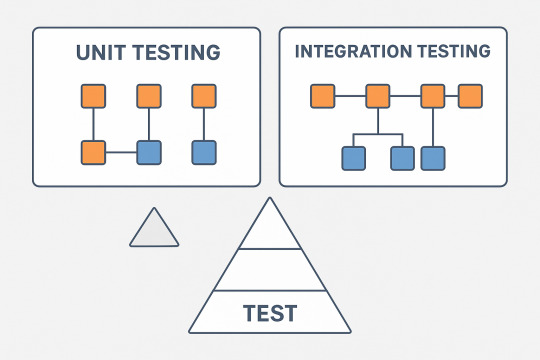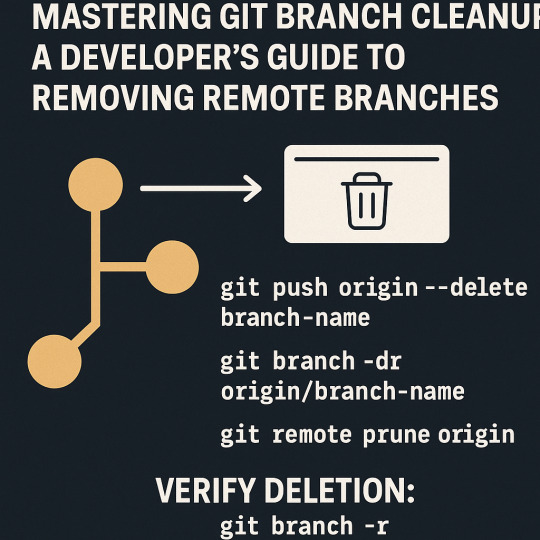Don't wanna be here? Send us removal request.
Text
🧪 React Testing Online: Your Guide to Cloud-Based Excellence

Hey devs 👋 – Let’s talk React testing in the cloud. If you’re still running all your tests locally, it’s time to explore the online world 🌐. Cloud-based testing isn’t just convenient—it’s a game-changer for collaboration, speed, and quality.
🌍 Why Go Online for React Testing?
No setup headaches – Just code and test in the browser.
Team collab – Work with your squad in shared environments.
Enterprise tools for everyone – Big features without big infra.
✨ Try React testing online with ease!
🧩 How It Works: The Cloud Testing Ecosystem
React testing online means you get:
🚦 Standard test environments
🤝 Real-time team collaboration
🔌 CI/CD and IDE integration
🔍 Testing Best Practices (That Just Work Better Online)
1. Component-First Testing Test your UI components in isolation 🔬
2. Behavioral over Implementation Focus on what it does, not how 👀
3. The Testing Pyramid
🧪 Unit
🔗 Integration
🚀 E2E …and all of them fit in one cloud workflow.
🧠 Advanced (and Cool) Testing Ideas
💥 Mutation Testing – Catch weak tests by injecting bugs
🎲 Property-Based Testing – Find weird edge cases automatically
⚠️ Chaos Testing – Simulate slow internet or failed APIs
⚛️ React Ecosystem Test Tips
Hooks? Test 'em in isolation with mocks
Context & State? Use tools to track propagation
Routing? Simulate user navigation like a pro
🚀 Performance Testing in the Cloud
📦 Bundle Analyzer
⚡ Runtime Metrics (render speed, memory)
🌟 Google Lighthouse baked into your tests
🌐 Cross-Platform Testing
📱 Device emulators for responsive UI
🧭 Browser compatibility checks
📶 PWA testing with simulated offline/network states
📊 Test Data & API Simulation
🧬 Generate + manage test data on the fly
🔌 Mock APIs to simulate failures, delays, edge cases
🗃️ Test database integration without messing up real data
🔁 Continuous Testing = Continuous Confidence
✅ Quality gates before merging
🔁 Tests run at every commit
📈 Metrics + dashboards to track coverage + performance
🧑💻 Collab Like a Pro
🌍 Perfect for remote teams
📚 Built-in tutorials & training
🧠 Docs + history = knowledge sharing
🔒 Secure & Compliant
🔐 Safe environments for sensitive data
🧾 Full audit trails
🛡️ Role-based access controls
⚡ What’s Next?
🤖 AI-powered test generation + predictions
🧩 Serverless-friendly architectures
🛠️ Native integration with VS Code, GitHub, and more
🚨 TL;DR
Online testing is not just “nice to have��� — it’s essential for modern React development. Whether you're testing a single hook or shipping a PWA, platforms like Keploy give you the tools to do it right.
Build faster. Break less. Sleep better. 🌙
0 notes
Text
🧵 Base64 Decoding Isn't as Simple as You Think
Common Pitfalls + How to Not Break Things
🤔 Wait... What’s Base64 Again?

Base64 is how we encode binary data as text — perfect for sending images, tokens, and files through APIs, emails, or logs.
But decoding it? That’s where the bugs crawl in 🪳
⚠️ Pitfall Parade: What Goes Wrong?
⛔ Missing padding characters (=)
🧾 Line breaks inside encoded strings
📛 Non-standard chars (especially from copy-paste or old email clients)
🌐 Unicode data gone wrong
🤯 Truncated strings from network/database errors
🔀 Different variants (some use - and _, others use + and /)
🔧 What Should You Actually Do?
✅ Trim weird characters before decoding
✅ Validate string length and completeness
✅ Check padding — and fix it if needed
✅ Decode to bytes before converting to UTF-8 text
🧪 Real Dev Pro Tips
Stream large files instead of loading into memory
Avoid silent fails — always log decoding errors
Use test cases with:
✅ Valid strings
🛑 Invalid ones
🔄 Multiple variants
📦 Huge payloads
🛡️ Don’t Ignore Security
Yes, decodeBase64 can be a vulnerability if you’re not careful.
Input validation is 🔑
Add memory/time limits to prevent resource abuse
Handle unexpected formats with graceful fallback, not crashes
📊 Deploying to Production?
🔍 Monitor:
Failed decoding attempts
Average decoding time
Resource usage
📦 Use tools like Keploy to mock and test decoding pipelines as part of your CI/CD.
🎯 TL;DR
Base64 is everywhere, but decoding it properly means:
Validating everything 🔍
Handling weird edge cases ⚠️
Thinking about performance & security 💡
Testing. Testing. Testing. 🧪
0 notes
Text
🧹 Clean Up Your Git Repo Like a Pro 🚀

Ever feel like your Git repo is getting out of hand with too many branches? Here’s a quick guide to Git Branch Management — so you can stay organized and keep your project tidy.
🌱 Why Clean Up Git Branches?
Too many branches = confusion 😵💫
Finished a feature or bug fix? Delete that branch 💣
Old experimental ideas? Let them go 🧹
Stale branches? If it’s not been touched in weeks... you know what to do 💀
🔥 How to Delete Local Branches
✅ Safe delete (merged branches only):
bashCopy
Edit
git branch -d branch-name
❗ Force delete (use with caution):
bashCopy
Edit
git branch -D branch-name
🧼 Delete multiple at once:
bashCopy
Edit
git branch -d branch1 branch2 branch3
🌐 How to Delete Remote Branches
👋 Say goodbye to a remote branch:
bashCopy
Edit
git push origin --delete branch-name
🧠 Remember: Deleting locally ≠ deleting remotely Do both if needed!
🛠️ Pro Cleanup Tips
🧽 Clean remote tracking branches:
bashCopy
Edit
git remote prune origin
🧨 Bulk delete merged branches:
bashCopy
Edit
git branch --merged | grep -v '\*\|main\|master' | xargs -n 1 git branch -d https://keploy.io/blog/community/how-to-delete-local-and-remote-branches-in-git-a-complete-guide
✅ Branch Management Best Practices
📆 Clean up regularly
🏷️ Use naming conventions (feature/login, bugfix/404)
📣 Communicate before deleting team branches
💾 Always commit or stash before deletion
💡 Bonus: Automate It!
Use GitHub/GitLab settings or CI pipelines to auto-delete branches after merge. Less work, cleaner repos. Win-win.
Got more Git tips? Or just cleaned up your repo? Tag it with #gitclean or #devtips and show us your before & after!
🧠 For more dev insights and testing superpowers, check out Keploy 💥
0 notes
Text
🧬 Base64 Decoding: What Every Developer Needs to Know

Let’s be honest — you’ve definitely come across a weird string of letters and slashes ending in “==” and thought:
“Yeah, that’s Base64… but what the heck is it really doing?”
Welcome to your crash course. 🧠💻
🔍 What Even Is Base64?
Base64 is how we turn messy binary data into readable text — perfect for email, APIs, or sending files over the web. It uses a special 64-character set (A-Z, a-z, 0-9, +, /) to encode data safely into ASCII. Clean, compact, and protocol-friendly.
🧩 Example: You → upload an image → server encodes it to Base64 → sends it in a JSON → you decode it back to… pixels!
📦 Where You’ll See It
Base64 is everywhere:
🖼 Embedded images in HTML/CSS
🔐 JWT tokens and API keys
📦 Binary files in APIs
📧 Email attachments
📁 Config files and logs
📱 Mobile backend comms
If you’re building or debugging anything beyond a to-do app, you’ll hit Base64.
🛠 How to Decode It Like a Pro
🧑💻 Tools:
base64 -d (Linux/Mac CLI)
Online decoders (for quick checks)
Code:
Python: base64.b64decode()
JS: atob()
Java, C#, Go, etc. all have built-in support
Bonus: most browser DevTools and IDEs can decode Base64 too! https://keploy.io/blog/community/understanding-base64-decoding
✅ Best Practices
✔ Validate input before decoding ✔ Handle padding (= at the end) ✔ Know what the output should be (text? image? zip file?) ✔ Be super cautious with user-supplied data (hello, malware 👀)
🧠 Pro Techniques
Streaming decode big files (don’t blow up your memory)
URL-safe Base64 (replaces + with -, / with _)
Custom alphabets (legacy systems love weird stuff)
Know the variant you're working with or your decoder will cry.
🐛 Common Gotchas
Missing/extra padding
Non-standard characters
Encoded inside a URL (needs double decoding)
Newlines and whitespace (strip ’em!)
🔄 Real-World Dev Workflows
CI/CD pipelines decoding secrets and config
API testing tools validating Base64 fields
Git diffs showing Base64 blobs
Debugging mobile apps or IoT devices
Basically: If your app talks to anything, Base64 shows up.
🔧 TL;DR
Base64 is the bridge between binary chaos and readable text. Learn to decode it confidently and you’ll:
Debug faster
Build cleaner APIs
Catch sneaky security threats
Save your teammates from “what’s this encoded blob?” horror
Oh, and if you want to auto-test and validate APIs that use Base64? 👉 Keploy is your new best friend. Mocking + testing with encoded data made simple.
0 notes
Text
🧪 Unit Testing vs Integration Testing — What You Actually Need to Know

Let’s be real: testing code isn’t glamorous. But if you’ve ever shipped a bug to production and had to do damage control at 3AM… you know why it matters. So here’s a dev-to-dev breakdown of unit testing vs integration testing — when to use them, why they matter, and how to stop writing tests you’ll hate later.
🧱 Unit Testing — Tiny but Mighty
Unit tests are like micro-inspections of your code. They check if one function or method works in isolation.
Think:
“Hey calculateTax(), are you actually doing your job?”
🔍 Traits of Unit Tests:
Super fast 🚀
No dependencies 🙅
One job per test ✅
Great for catching bugs early
Why Devs Love Them:
Instant feedback while coding
Safer refactors
Self-documenting behavior
🔗 Integration Testing — Making Sure the Gears Mesh
So your functions work. Cool. But do they work together?
That’s where integration tests come in. They test if multiple parts of your app play nice — like a backend talking to a DB or an API endpoint returning expected results.
Types You Might Use:
Big Bang 🌋 (everything together)
Top-Down ⬇️ (from main to components)
Bottom-Up ⬆️ (from base up)
Sandwich 🥪 (mix of both)
Why They Matter:
They catch real-world issues
Validate APIs, DBs, services, etc.
Great before releases or CI deploys
🧠 When to Use What?
Use Unit Tests When...Use Integration Tests When...You're building a featureYou're testing a whole workflowRefactoring logicWorking with APIs/DBsWanting fast feedbackDoing release checksWriting core functionsVerifying third-party stuff
🧱 Pyramid of Testing 🧪
You don’t need 1:1:1 test ratios.
Use the testing pyramid model:
70% Unit Tests (fast + many)
20% Integration Tests (middle ground)
10% End-to-End (slow, UI-based)
Visual: 🔺 Bottom-heavy = stable.
✅ Unit Test Tips:
Keep them short & sweet
Use mocks/stubs
Descriptive test names
Don’t chase 100% coverage — aim for value
✅ Integration Test Tips:
Focus on critical flows
Use test DBs or containers
Keep tests stable with proper setup/teardown
🛑 Common Mistakes
Only writing integration tests = sloooow CI 💀
Only writing unit tests = missing real bugs 😬
Writing flaky tests = no one trusts the suite 🙅♂️
Balance. Always balance.
🛠️ Tools We 💙
Unit: Jest, JUnit, pytest
Integration: Postman, Cypress, Selenium
AI-Assist/Auto-Gen: Keploy 👈 (seriously cool if you hate writing tests manually) https://keploy.io/blog/community/unit-testing-vs-integration-testing-a-comprehensive-guide
🚀 What’s Next?
Apps are getting more complex. Microservices, async workflows, APIs everywhere.
That means: ✅ Smarter test strategies ✅ More automation ✅ AI tools to help keep up
💬 TL;DR
Unit tests check your logic
Integration tests check your system
You need both. Period.
Automate what you can.
Use Keploy if you want your tests written for you (because who doesn’t?).
0 notes
Text
🧹 Mastering Git Branch Cleanup: How to Delete Remote Branches Without the Drama

If your Git repo looks like a graveyard of stale branches... we need to talk. 🪦
Let’s clean up that mess.
👀 Why Bother?
Every merged feature branch that’s left hanging around is just more clutter. It confuses teammates. It bloats your remote. It makes git branch -r cry.
💡 git branch delete remote branch after they’ve served their purpose keeps your repo lean, clean, and readable.
🔥 The Command You Need
The gold standard:
bashCopy
Edit
git push origin --delete branch-name
You can also go old-school (but still valid):
bashCopy
Edit
git push origin :branch-name
Yep. That : means “push nothing,” which = delete.
🧼 Bonus Clean-Up Tricks
✅ Remove a local remote-tracking branch:
bashCopy
Edit
git branch -dr origin/branch-name
✅ Clear out all dead refs from your machine:
bashCopy
Edit
git remote prune origin
✅ Or be thorough:
bashCopy
Edit
git fetch --prune
✅ Double-check it's gone:
bashCopy
Edit
git branch -r
⚠️ Watch Out For…
Protected branches like main or develop? Git’s not letting you touch them (and that’s a good thing).
Permission errors? You might not have rights to delete from the remote.
Coworkers still using the branch? Ask before you pull the plug 😬
⚙️ Pro Tip: Automate It
Set your CI/CD to nuke merged branches post-PR. It saves time and keeps your repo zen without manual work.
Pair this with test automation (👋 Keploy) to make sure your cleanup happens after you know everything works.
✅ Git Cleanup Checklist Before Deleting a Branch:
Merged ✅
No one’s using it ✅
PR is closed ✅
You’re not gonna cry later ✅
💬 TL;DR
Deleting Git remote branches = less mess, less stress. Clean repos = happy teams.
Go forth and prune 🌿 And if you want more automation goodness, check out Keploy — it’s like a test-automation sidekick for your Git workflow.
0 notes
Text
🔍 Streamlining JSON Comparison: Must-Know Tips for Dev Teams in 2025

JSON is everywhere — from configs and APIs to logs and databases. But here’s the catch: comparing two JSON files manually? Absolute chaos. 😵💫
If you’ve ever diffed a 300-line nested JSON with timestamps and IDs changing on every run… you know the pain.
Let’s fix that. 💡
📈 Why JSON Comparison Matters (More Than You Think)
In today’s world of microservices, real-time APIs, and data-driven apps, JSON is the glue. But with great power comes... yeah, messy diffs.
And no, plain text diff tools don’t cut it anymore. Not when your data is full of:
Auto-generated IDs
Timestamps that change on every request
Configs that vary by environment
We need smart tools — ones that know what actually matters in a diff.
🛠️ Pro Strategies to Make JSON Diff Less of a Nightmare
🔌 Plug It Into Your Dev Flow
Integrate JSON diff tools right in your IDE
Add them to CI/CD pipelines to catch issues before deploy
Auto-flag unexpected changes in pull requests
🧑💻 Dev Team Playbook
Define what counts as a “real change” (schema vs content vs metadata)
Set merge conflict rules for JSON
Decide when a diff needs a second pair of eyes 👀
✅ QA Power-Up
Validate API responses
Catch config issues in test environments
Compare snapshots across versions/releases
💡 Advanced Tactics for JSON Mastery
Schema-aware diffing: Skip the noise. Focus on structure changes.
Business-aware diffing: Prioritize diffs based on impact (not just "what changed")
History-aware diffing: Track how your data structure evolves over time
⚙️ Real-World Use Cases
Microservices: Keep JSON consistent across services
Databases: Compare stored JSON in relational or NoSQL DBs
API Gateways: Validate contract versions between deployments
🧠 But Wait, There’s More…
🚨 Handle the Edge Cases
Malformed JSON? Good tools won’t choke.
Huge files? Stream them, don’t crash your RAM.
Internationalization? Normalize encodings and skip false alarms.
🔒 Privacy & Compliance
Mask sensitive info during comparison
Log and audit every change (hello, HIPAA/GDPR)
⚡ Performance Tips
Real-time comparison for live data
Batch processing for large jobs
Scale with cloud-native or distributed JSON diff services
🚀 Future-Proof Your Stack
New formats and frameworks? Stay compatible.
Growing data? Choose scalable tools.
New team members? Train them to use smarter JSON diffs from day one.
💬 TL;DR
Modern JSON comparison isn't just about spotting a difference—it’s about understanding it. With the right strategies and tools, you’ll ship faster, debug smarter, and sleep better.
👉 Wanna level up your JSON testing? Keploy helps you test, diff, and validate APIs with real data — no fluff, just solid testing automation.
0 notes
Text
🚀 Mastering Productivity: Redo Keyboard Shortcuts You Shouldn’t Ignore

Let’s face it—undo gets all the love, but redo is the underrated productivity hack you’re probably not using enough.
🔁 What’s Redo, Really?
Undo takes a step back. Redo takes you forward. It’s your digital safety net—especially useful when you're experimenting, refactoring, or just accidentally hit Cmd+Z too many times.
💻 The Shortcuts You Need
🪟 Windows / Linux
Ctrl + Y → Most apps
Ctrl + Shift + Z → Creative and advanced tools
F4 → Repeat in Microsoft Office
🍏 macOS
Cmd + Shift + Z → Default for most apps
Cmd + Y → Alternate in some editors Check THIS => For Redo Shortcuts
🛠️ Where Redo Shines
Text & Code Editors: Jump forward through your edits cleanly.
Image/Video Tools: Restore actions when trying out creative effects.
IDEs: Reverse an undo while deep in a debugging/refactoring loop.
🔥 Pro Tips
Train your fingers — Build that muscle memory.
Know your limits — Some apps only remember a few actions.
Pair with Undo — Master the dance between Cmd+Z and Cmd+Shift+Z.
🧩 Bonus: Advanced Moves
Multi-step Redo: Tap repeatedly to move forward quickly.
Visual History: IDEs like VS Code or Photoshop let you jump to any point.
💡 For Developers
If you’re working on high-velocity dev workflows, tools like Keploy can help. Think of it as redo logic, but for your entire test and deployment pipeline—with AI-backed automation.
0 notes
Text
Python's Game-Changing Match-Case Statement
Python 3.10 introduced the match-case syntax — a powerful upgrade over if-elif chains that brings advanced pattern matching to the language.
From destructuring complex data to handling APIs, configs, and even building state machines — match-case lets you write cleaner, more declarative code.
python case statement
Edit
match config: case "debug": return {"logging": "verbose"} case [first, *rest]: return {"first": first, "rest_count": len(rest)} case {"type": "cache", "ttl": int(ttl)} if ttl > 0: return f"TTL: {ttl}s" case _: return "Invalid config"
It’s like switch-case, but way smarter — supporting data types, guards, sequences, and class matching.
🎯 Use Cases:
Simplify conditionals
Clean API response handling
Build state machines effortlessly
Elegant error validation
Cleaner config processing
Match-case isn’t just syntax sugar — it’s a shift in how we think about control flow in Python.
💡 Bonus: It works beautifully with type hints, mypy, and IDE autocompletion.
🔧 Want to test smarter with powerful pattern-matched logic? Keploy supports your dev workflows with reliable testing tools for modern Python code.
1 note
·
View note